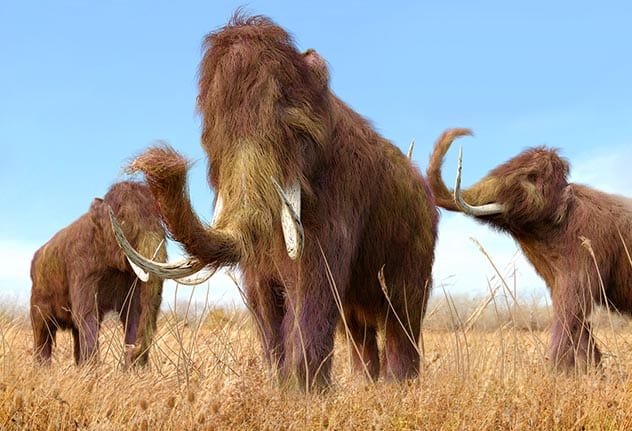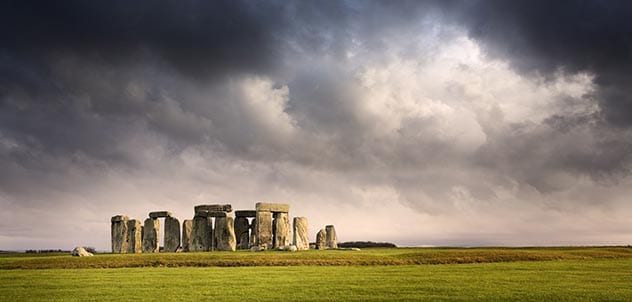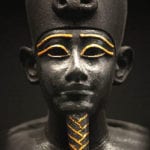 Music
Music  Music
Music  History
History 10 Less Than Jolly Events That Occurred on December 25
 Weird Stuff
Weird Stuff 10 Funny Ways That Researchers Overthink Christmas
 Politics
Politics 10 Political Scandals That Sent Crowds Into the Streets
 Weird Stuff
Weird Stuff Ten Bizarre Facts About The Doge Meme
 Our World
Our World 10 Ways Your Christmas Tree Is More Lit Than You Think
 Movies and TV
Movies and TV The 10 Coolest Stars to Set Sail on The Love Boat
 History
History 10 Things You Didn’t Know About the American National Anthem
 Technology
Technology Top 10 Everyday Tech Buzzwords That Hide a Darker Past
 Humans
Humans 10 Everyday Human Behaviors That Are Actually Survival Instincts
 Music
Music 10 Surprising Origin Stories of Your Favorite Holiday Songs
 History
History 10 Less Than Jolly Events That Occurred on December 25
 Weird Stuff
Weird Stuff 10 Funny Ways That Researchers Overthink Christmas
Who's Behind Listverse?

Jamie Frater
Head Editor
Jamie founded Listverse due to an insatiable desire to share fascinating, obscure, and bizarre facts. He has been a guest speaker on numerous national radio and television stations and is a five time published author.
More About Us Politics
Politics 10 Political Scandals That Sent Crowds Into the Streets
 Weird Stuff
Weird Stuff Ten Bizarre Facts About The Doge Meme
 Our World
Our World 10 Ways Your Christmas Tree Is More Lit Than You Think
 Movies and TV
Movies and TV The 10 Coolest Stars to Set Sail on The Love Boat
 History
History 10 Things You Didn’t Know About the American National Anthem
 Technology
Technology Top 10 Everyday Tech Buzzwords That Hide a Darker Past
 Humans
Humans 10 Everyday Human Behaviors That Are Actually Survival Instincts
8 Incredible Resurrected Ancient Sounds
History leaves plenty of evidence behind. We can gaze upon the ruins of vanquished civilizations, ponder the bones of the long-dead, and read about all the cool parts which were glossed over in grade school. One thing we can’t do so much is hear the sounds of the distant past, but that hasn’t stopped people from trying to fill in the blanks. Through scans, anatomical study, and, in many cases, the wonders of 3D-printing, scientists and sound engineers have enabled dead people, animals, and instruments to roar to life for the modern world to hear.
See Also: Top 10 Incredible Recordings
8 A Pile Of Extinct Birds
Te Papa, the national museum of New Zealand, opened the Te Taiao exhibition in May 2019. Included in the feature are a number of extinct native birds, such as the fearsome Haast’s eagle and its equally formidable prey, the moa. The vocalizations of these long-gone avians have been re-created as well, through the efforts of Te Papa staff and Wellington sound designers.
Featured above is what a Haast’s eagle call may have sounded like, as rendered by sound engineer Piers Gilbertson. Gilbertson began with the vocalizations of a golden eagle and shifted their pitch. Unfortunately, the end result, according to Gilbertson, sounded like “a large, angry chicken.” Then, he turned to the Wahlberg’s eagle and, working with fellow sound designer Chris Ward, slowed the length of the Wahlberg’s call while retaining its frequency range.
As mentioned, the Haast’s eagle call can be heard above. You can click on the bracketed link at the end of this sentence to also hear re-creations of the moa, the Finsch’s duck, the New Zealand goose, and the huia.[1]
7 Panpipes From Roman Egypt
In March 2018, researchers at the University of Kent successfully 3D-printed a working replica of a set of panpipes from Roman Egypt. The original (and extremely fragile) reed panpipes were scanned along with a number of other ancient instruments as part of a collaborative effort between several institutions, the end goal being exhibition of the re-created instruments’ sounds at University College London’s Petrie Museum of Egyptian Archaeology.
Simply building a new set of reed panpipes for the project wasn’t feasible; finding reeds at the required size would have been nearly impossible. Other materials were needed. A bamboo replica was made, but the winning material was a biodegradable thermoplastic. When the 3D-printed replica was tested, it was found to play a musical scale known to have existed in Roman Egypt, as confirmed by ancient writings.
Dr. Ellen Swift, a project team member, described the finding as a “real eureka moment,” though the researchers were surprised at how high-pitched the panpipes sounded.[2]
6 Ancient Greek Music
You didn’t have to look far to find music in ancient Greece. Plenty of documentation of it survives. However, despite an abundance of information on instruments, notes, scales, and so forth, the actual sound of ancient Greek music has been harder to pin down. The original sources describe the music in terms quite different than what a modern musician would be accustomed to. In the past, what could be reliably interpreted and re-created has sounded odd, to say the least.
Dr. Armand D’Angour of the University of Oxford sought to clear the confusion. He analyzed a papyrus, found in 1892, which contains part of a chorus from the play Orestes, written by Euripides in 408 BC. The score on the papyrus was bizarre by Western standards, making use of quarter-tone intervals. According to the professor’s analysis, those quarter-tone intervals worked as “passing-notes,” and the chorus itself was actually tonal. He also showed that the music featured “word-painting,” such as a falling cadence paired with the word “lament.”
In 2016, after three years of effort, Dr. D’Angour had reconstructed the music on the papyrus. An additional aid to his work was the re-creation and playing of several well-preserved examples of the aulos, a rather ubiquitous wind instrument from the time. This has provided much insight into the pitch range of ancient Greek music. In 2017, the Orestes piece was performed by an aulos player accompanied by a choir.[3]
5 Nesyamun
The dead spoke in 2020. Less dramatically (but more realistically) put, scientists were able to re-create the voice of a 3,000-year-old Egyptian priest named Nesyamun in January. The vocal tract of the mummy in question was well-preserved, fitting for a man whose coffin reads, “Nesyamun, true of voice.” The mummy’s throat was CT-scanned, and a replica of the vocal tract was 3D-printed. This replica was attached to a speaker connected to a computer, which generated the sound to be piped through.
The final result was an “eeeeehhh” sound, albeit a very realistic one according to Dr. David Howard, a University of London speech scientist. Replicating the sound of Nesyamun speaking words would be more difficult. For one, the mummy’s tongue hasn’t held up nearly as well as his throat. More knowledge of Nesyamun’s vocal tract articulations would also help, not to mention more insight into the timing and phonetics of his language. However, Dr. Howard believes that it may be possible to generate whole words in the mummified priest’s voice in the future.[4]
4 The Acoustics Of Stonehenge
What did Stonehenge sound like over 4,000 years ago? Not the same as today, of course. Stones have fallen over or been taken away, altering the acoustics. In 2019, Dr. Trevor Cox of the University of Salford, a man with an interest in acoustic archaeology, replicated how sound would have reverberated through Stonehenge in 2200 BC, with all of its original stones in place. This was accomplished by using detailed laser scans of Stonehenge to 3D-print a 1:12-scale replica of the ancient site. The mini-Stonehenge was set up in an acoustic research chamber and subjected to sounds played at 12 times their normal frequency.
Dr. Cox found that despite the monument having been quite open-air even when whole, it had acoustics like an enclosed space. Sound would have repeatedly bounced off the stones, and voices inside would have sounded more powerful. The effect probably would have seemed quite impressive to people of the time. The next step for Dr. Cox’s team will be to test the acoustics of Stonehenge at other points during its existence.[5]
3 The Iceman
Nesyamun isn’t the only mummy to have its voice re-created. In 2016, same thing was done with Ötzi, the famous “Iceman” found in the mountains of South Tyrol in 1991. In this case, Rolando Füstös of the Bolanzo General Hospital CT-scanned the Iceman’s throat. An MRI would have been preferable, but that would have required moving the fragile mummy, an action not taken lightly. Instead, software was employed to move the body virtually. This software was also helpful in reconstructing Ötzi’s hyoid bone and mitigating the fact that one of his arms lies over his throat.
As with Nesyamun, there were limitations: Not all of the soft tissue in the Neolithic mummy’s vocal tract has been preserved, and the tension of his vocal cords is unknown. The Iceman’s language isn’t known, either. Nevertheless, the researchers used software and mathematical models to re-create what Ötzi’s voice may have sounded like. The vowel sounds produced were between 100 and 150 hertz, not unusual for a human male, though they were surprisingly gravelly.[6]
2 Woolly Mammoth Vocalization

Listen to it here (three minutes into the clip on the linked page)
In 2010, Marguerite Humeau learned of an intricate robotic mouth designed by a researcher named Hideyuki Sawada. The device had moving lips, a flexible windpipe, and “lungs” in the form of an air tank. A video of the mouth singing a lullaby made its rounds on the Internet. Humeau had the idea to do something similar with extinct animals.
Her first effort was to reconstruct the voice box of Lucy, the famous Australopithecus afarensis. She didn’t have much to go on, given the partial nature of Lucy’s skeleton. With input from paleontologists, an ear, nose, and throat doctor, and a physician who’d performed a larynx transplant, Humeau nevertheless built the best Lucy voice box she could from resin, rubber, and silicone.
While working on Lucy’s larynx, Humeau had another idea: to re-create the vocal tract of a woolly mammoth. Again consulting with experts, including elephant vocalization specialists and Bernard Buigues, who has worked with preserved mammoths, Marguerite built an impressive 20-foot (6 m) apparatus meant to emulate the vocalizations of the extinct mammal. Both the Lucy and mammoth voice boxes were exhibited at the Royal College of Art in London in 2011. Apparently, the low rumble of the mammoth managed to frighten a number of children.
1 The T-Rex’s Rumble
It is believed that Tyrannosaurus rex may not have roared as portrayed in movies such as Jurassic Park, so what might it have sounded like? Chris Packham sought an answer in 2017, as part of a documentary to be aired on the BBC. To that end, he contacted Dr. Julia Clarke, a professor of vertebrate paleontology at the University of Texas.
Dr. Clarke utilized Chinese crocodiles as well as the call of the Eurasian bittern, scaled up to an animal of T-rex size, to gauge what the dinosaur may have sounded like. Also taken into account were scans of a fossilized Tyrannosaur braincase, providing insight into the animal’s hearing. It appears as though the T-rex was able to hear very low frequencies, possibly even below human auditory range. According to Packham, the carnosaur’s vocalizations would have been “such a low frequency that you wouldn’t have just heard it, you would have felt it, too.”
The end result can be heard at around the 2:30 mark of the above video. It is a very deep rumble, one which the T-rex probably didn’t even have to open its mouth to make. While quite different from the roar of Jurassic Park fame, it still manages to be unnerving. That makes perfect sense to Dr. Clarke: “I feel like this sound just induces fear. People think you need a roar to be really scary, but that is scariest sound you’ll have ever heard. I don’t know if we have some deep-seated adaptive response to low frequency sounds, but I would not be surprised.”[7]
For more lists like this, check out Top 10 Incredible Sounds, and 10 Mysterious Soundscapes That Rocked The Ancient World










